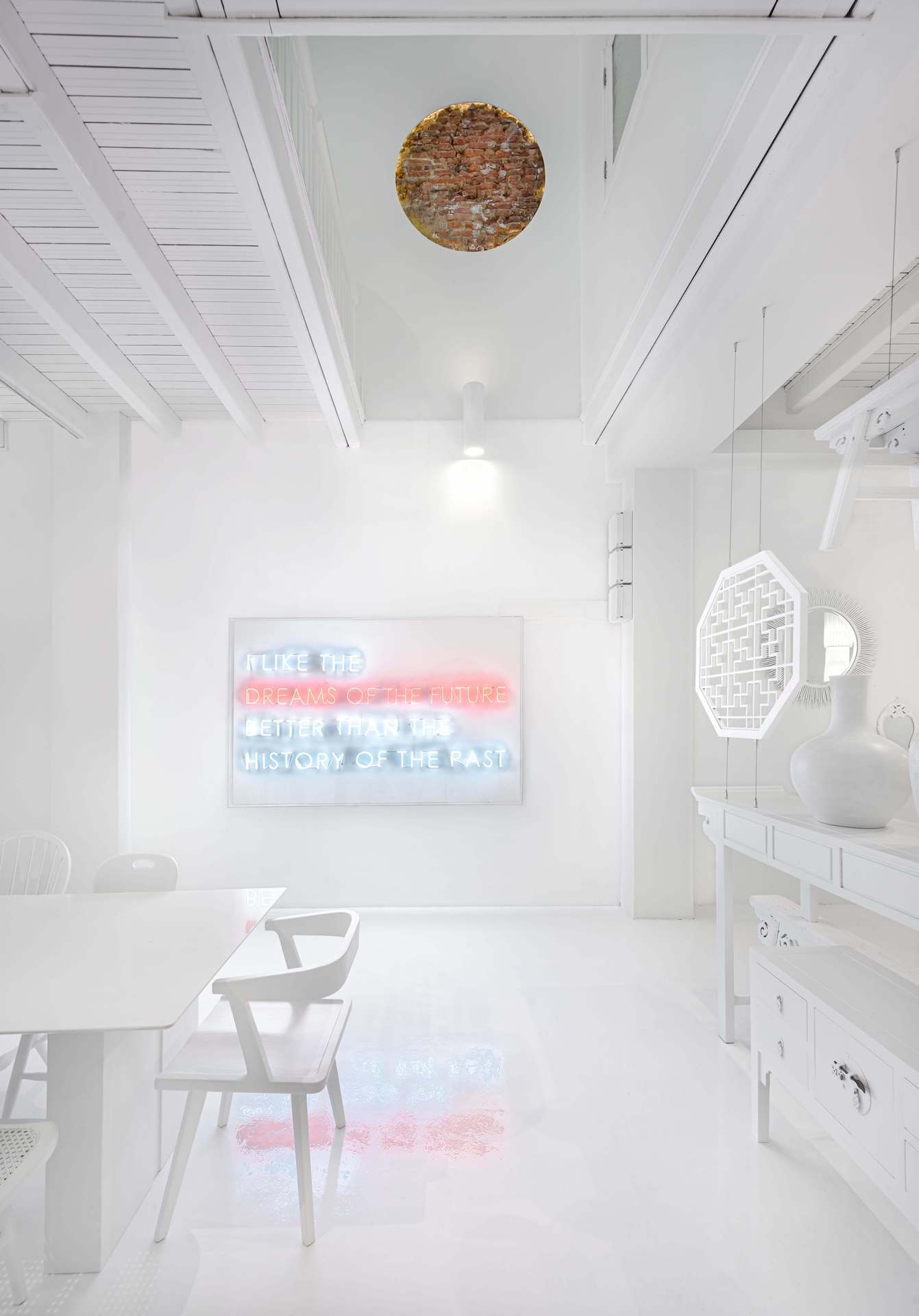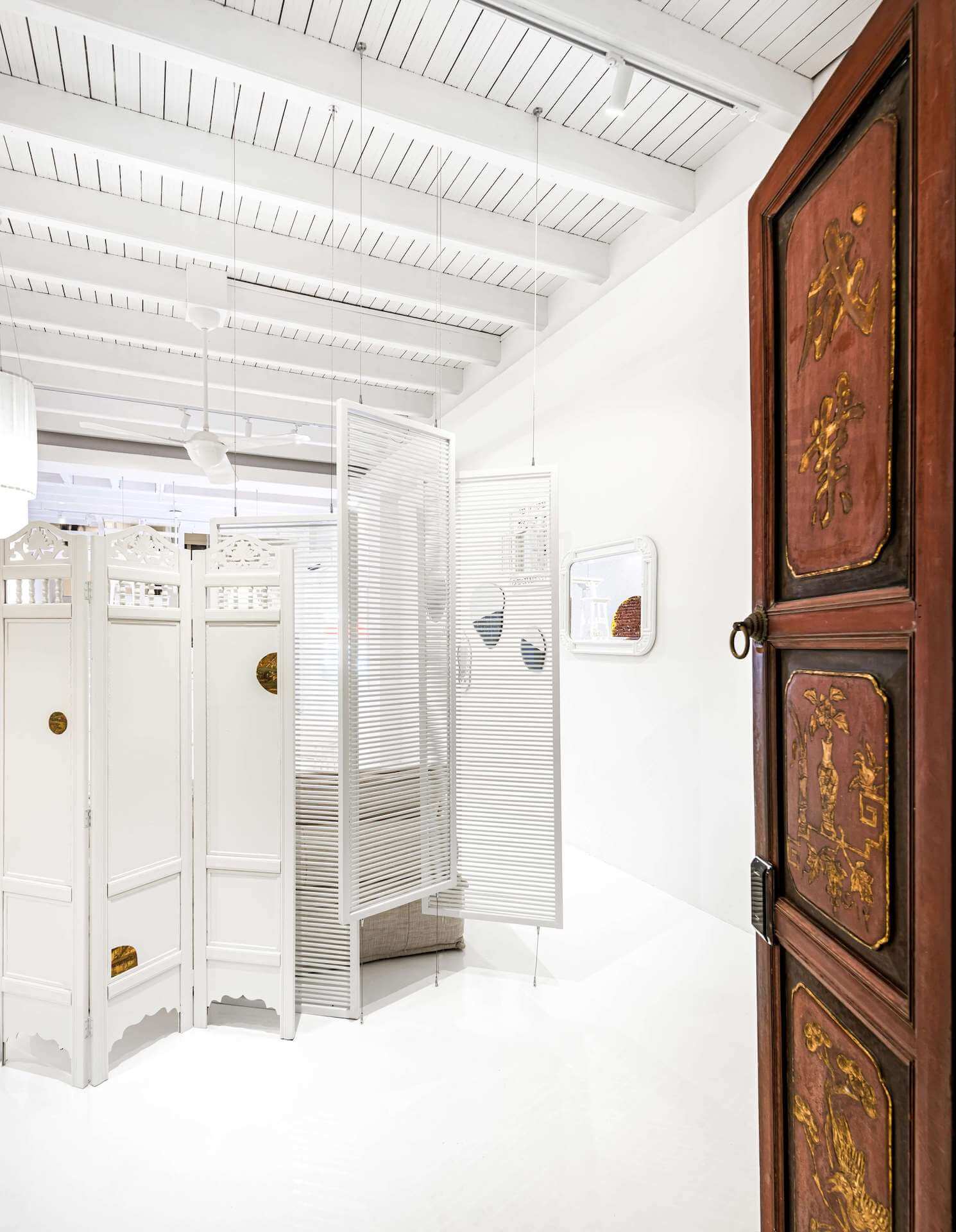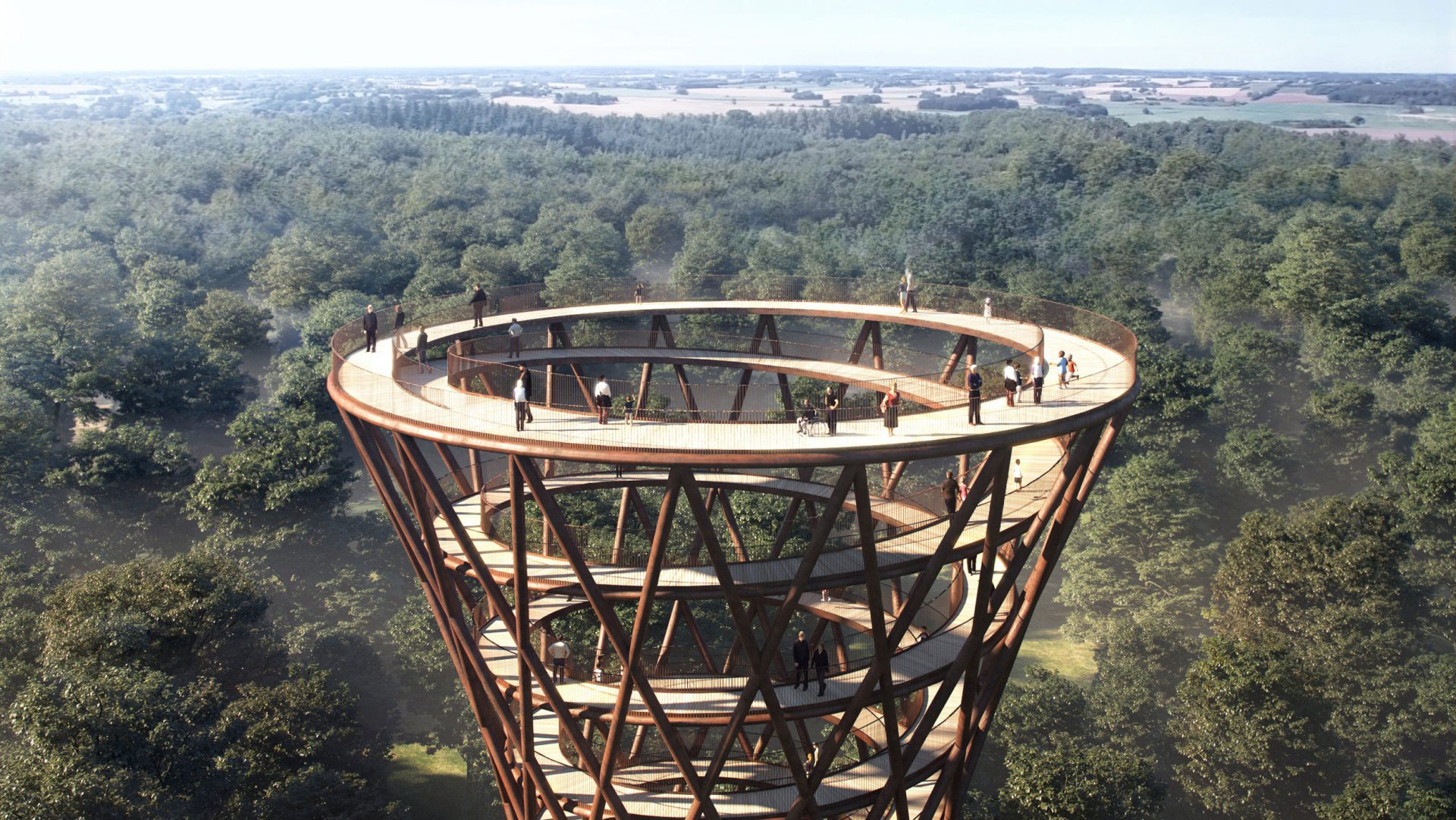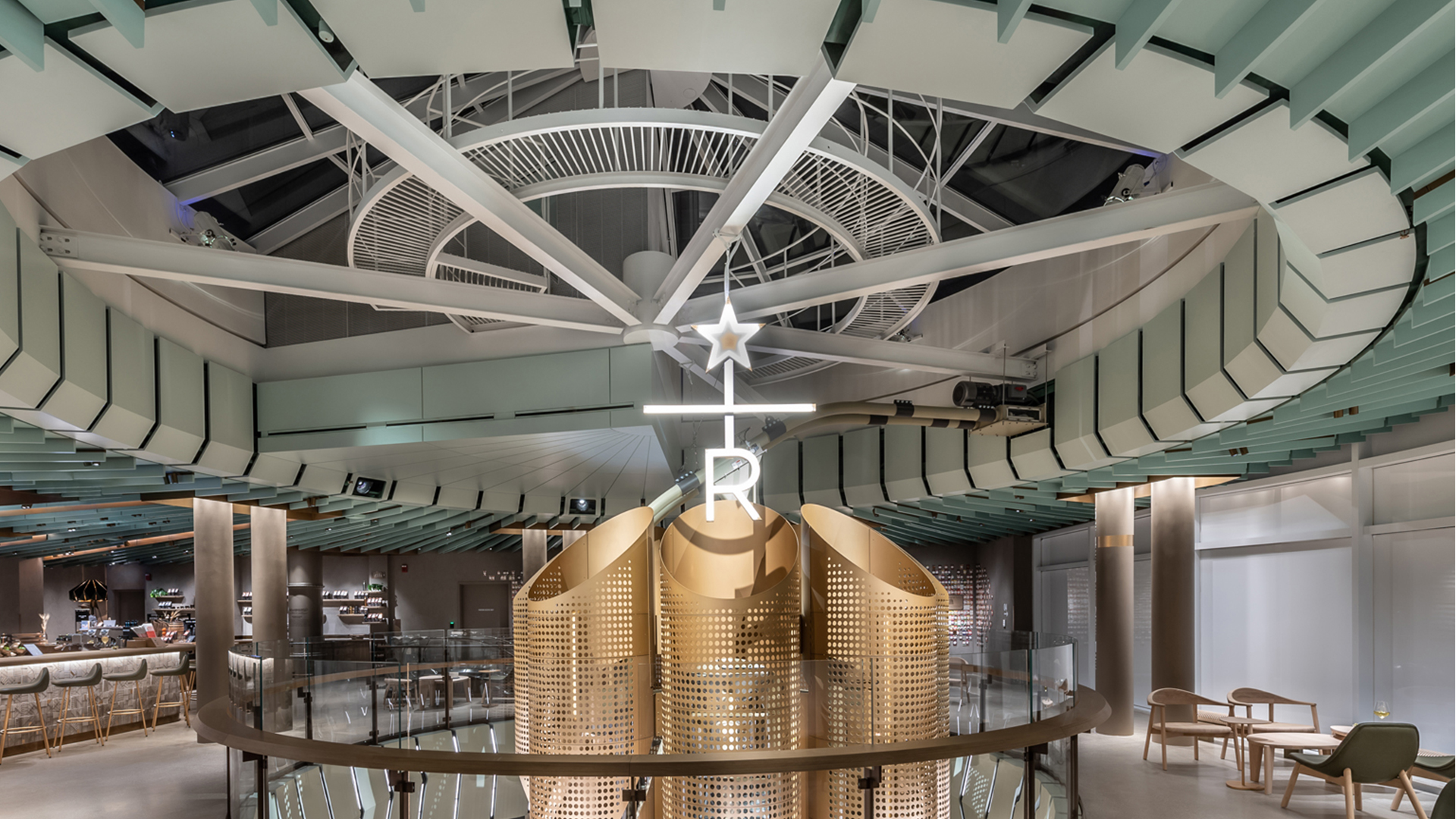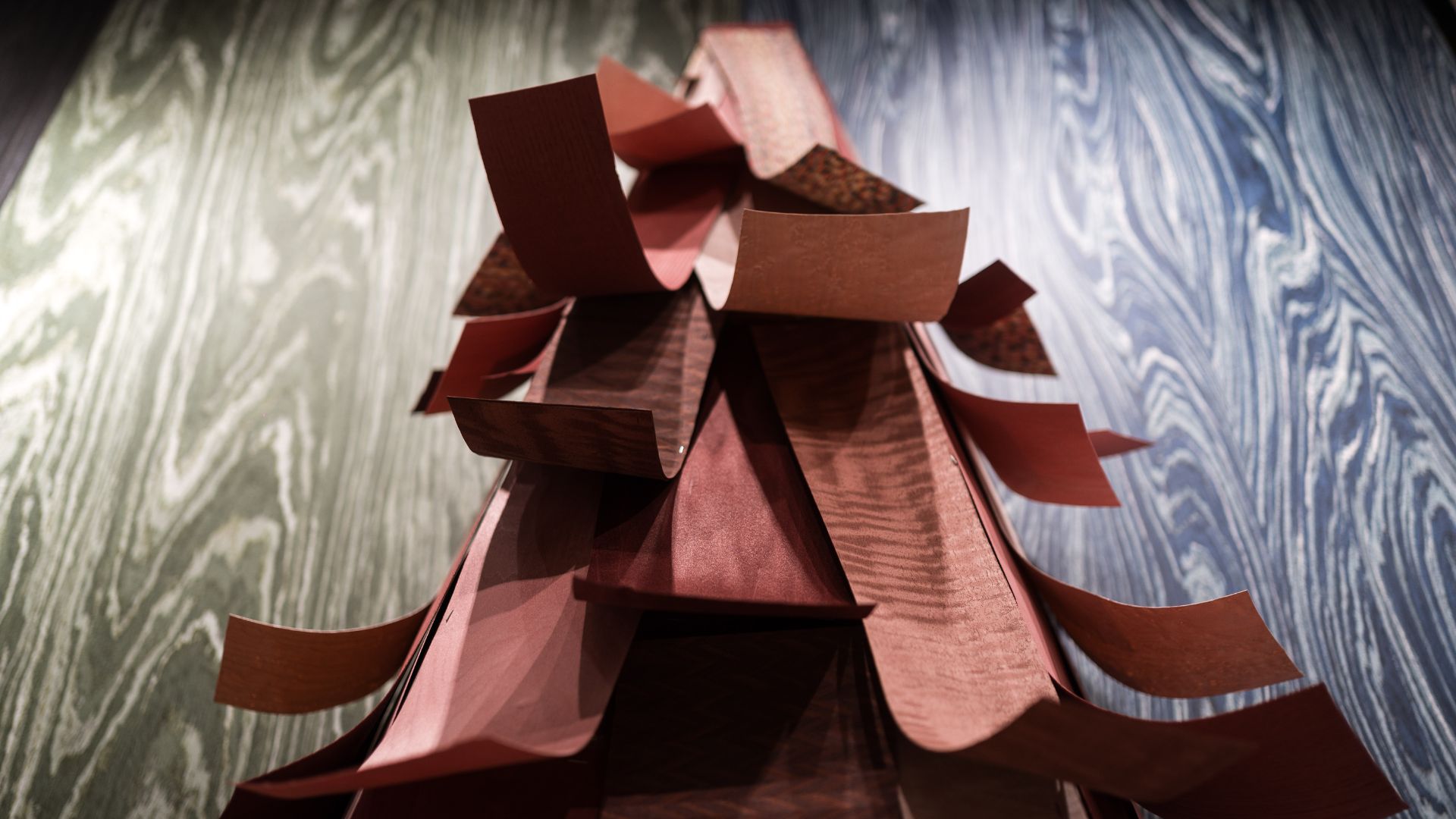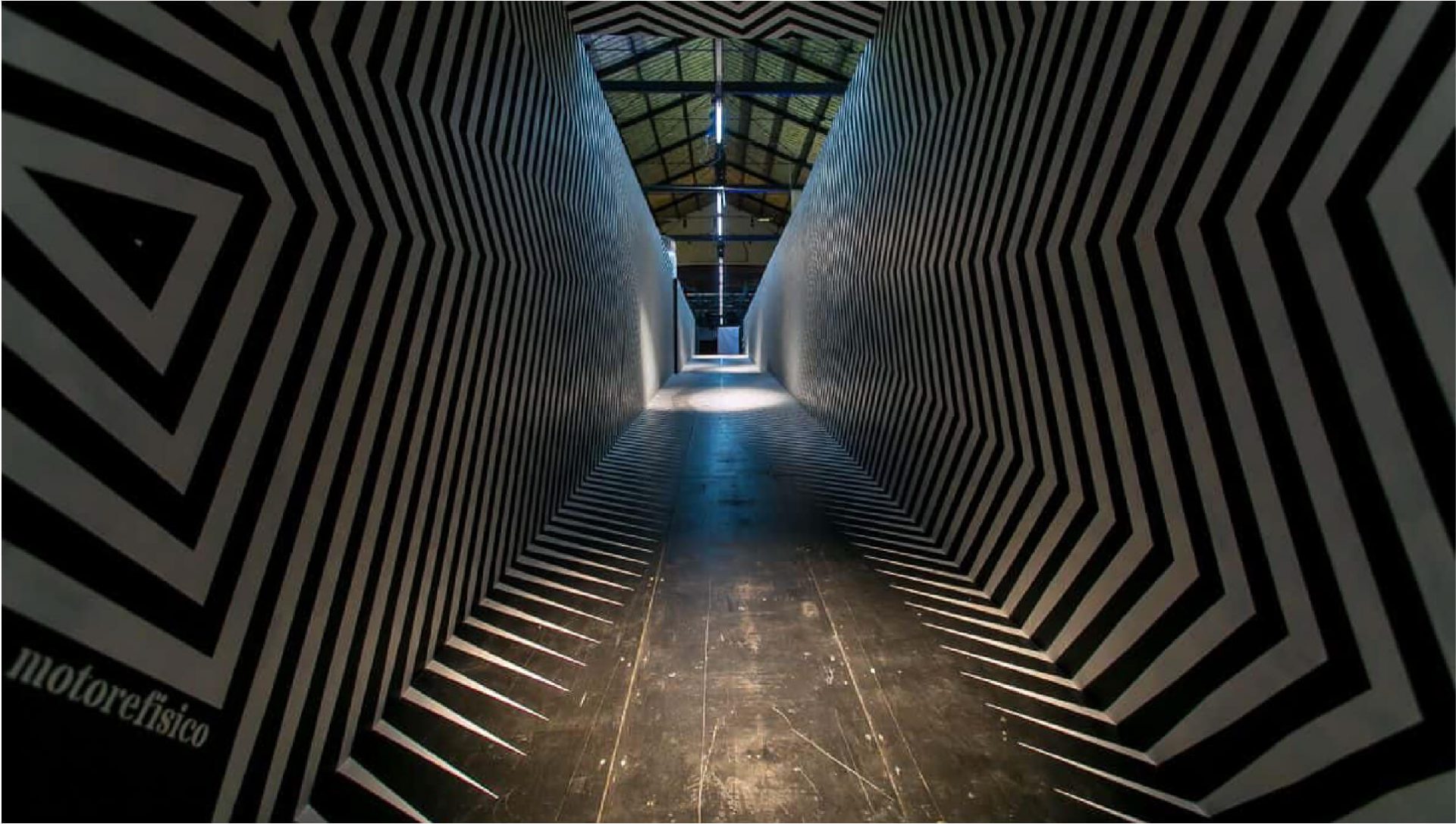A Singaporean poem of past, present and future crafted in an all-white palette
Canvas House, designed by MOD, is a co-living space for long-stay renters built on a historic dwelling with an aim to restore its historic importance, explore the current age of architecture and provide a canvas for the future.

Canvas House is a co-living rental space designed by Ministry Of Design (MOD) in Blair Road, Singapore. The developer of this 350 square meter house, Figment wanted the designers to re-imagine the interiors in a way for the house to stand out. MOD is renowned for its interdisciplinary approach towards design, drawn deeply from contextual surroundings. Each project endeavors to be delightfully surprising yet relevant.

The minds behind Canvas House – Colin Seah, Founder & Director of Ministry Of Design
Ministry of Design is an integrated architectural, interior design, and branding firm based in Singapore and founded by Colin Seah, in 2004. The firm questions convention and redefines the spaces, forms, and experiences by exploring and progressing seamlessly between form, site, object, and space.
MOD prefers to start far upstream and design holistic experiences rather than designing solutions. Committed to their vision of designing integrated experiences, the firm is established in 18 countries and has received many awards.
Materials & Techniques – Brick and stone walls and upcycled decor
MOD faced a tight budget and a timeline of four months. To meet the constraints, the designers decided to focus on upcycling the decor. Tables, chairs, chests, mirrors, screens, and vanity desks were repurposed and given a new lease of life. The studio collaborated with Kang, an artist who specializes in recycling and working with fused plastic, to produce a series of lights. Three sets of luminaries with fused plastic made from cling film were created and placed five-foot-way in the living room and the atrium. Keeping to the theme of layers, the cling film was layered and then ironed and heated to create a waterproof, leathery material.

Upcycling is not only a highly sustainable and creative option but is also a great solution for budget and time constraints. A text-based neon art piece was created, featuring a quote by Thomas Jefferson “it is a neutral white canvas for the future to be dreamt upon, rather than a wholesale homage to the past”, which summarises the character of the house. Fabricated by The Signmakers, the quote is penned in a single-stroke white and red glass neon and encased in an aluminum box.
Style & Aesthetics – Layered with intricate details
The whole project is an integration of many intricate design details layered in a way to blend the past, present, and future. In a sense, to blur the distinction between past and present, the distinction between the spatial elements (walls and ceiling) and the objects that sit within it (furniture and lights) is blurred by the ubiquitous white colour.

The design of revamped decor and furniture is carved out from the past: the vignettes on a decorative dragon, longevity vases, vintage ceramic plates hung on the wall, wooden screens, vanity dressers, and chairs. To confer these elements with a contemporary character they are also covered in white, resulting in a surreal effect. Original materials of the interior rhythmically reveal parts of the past: layers of brick and timber are exposed on a wall, part of the floor beneath the beds in the suites, providing the visitors with a holistic experience of discovery.
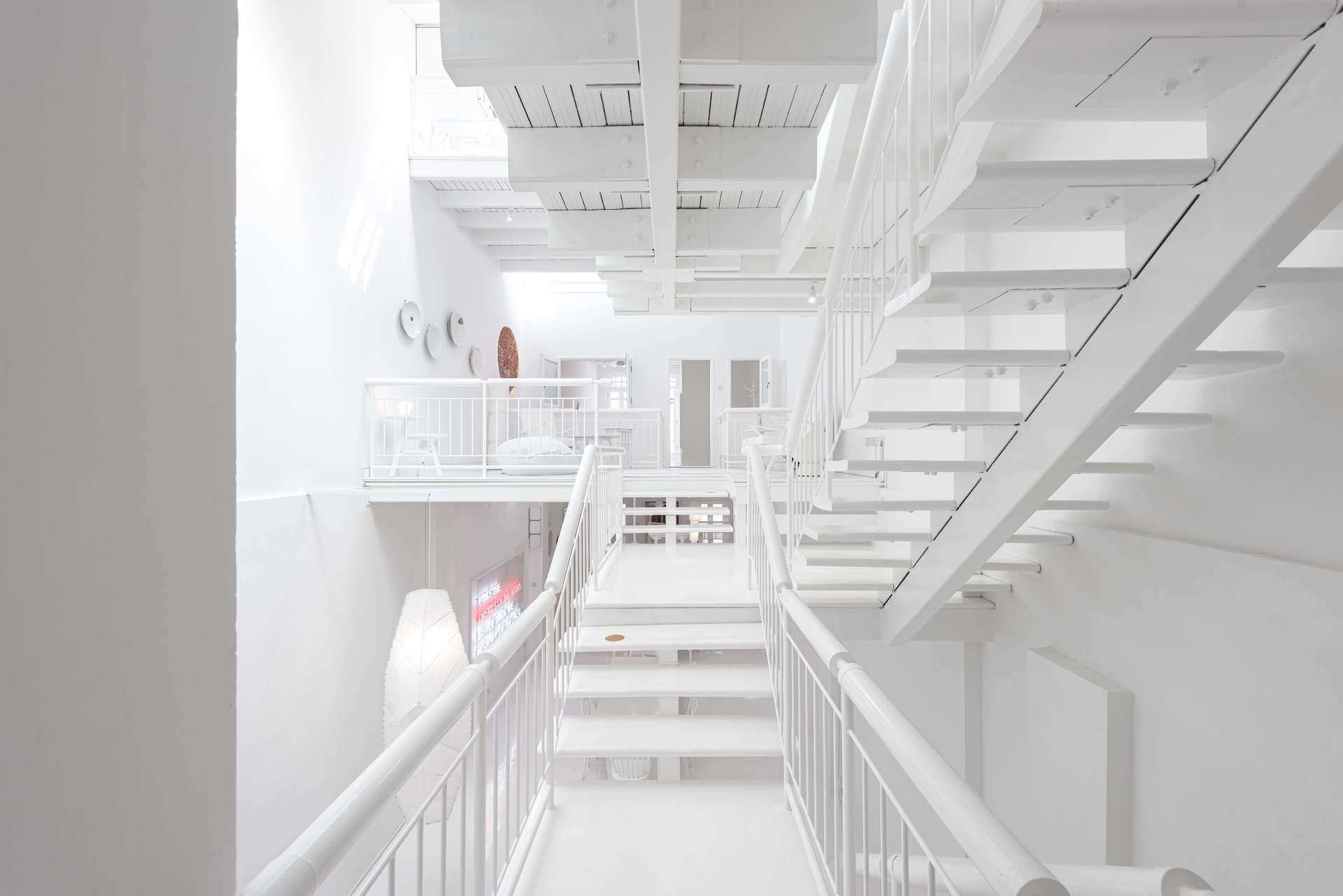
A symbol for the Singaporean mindset
Canvas House was renewed to host expats for mid-term stays of 3 to 12 months. Tenants will have the opportunity to live a traditional experience reimagined through modern aesthetics, perfectly representing the spirit of Singapore: a country which holds on to its traditions and cultural values, as much as it leans towards innovation and continuous transformation.

Design Memento – A one-of-a-kind experience
Historic dwellings, like this old shophouse, turned into a co-living apartment, are repositories of memories with previous lives and a past of their own. The design of the Canvas House explores the history and its relationship with the past, present, and future through the concept of layers. The house truly manifests a distinct and elaborate design thought giving one-of-a-kind experience to the users.

Writer’s opinion – Symbolism, a design tool of meaning architecture
The design of the Canvas House is a true example of meaningful architecture. This project indicates that architecture is not simply the ‘design of buildings’ that are mere physical enclosures, but rather, it is an expression of thoughts, preferences, beliefs, and emotions in built form, communicating through symbols and subtle features.





